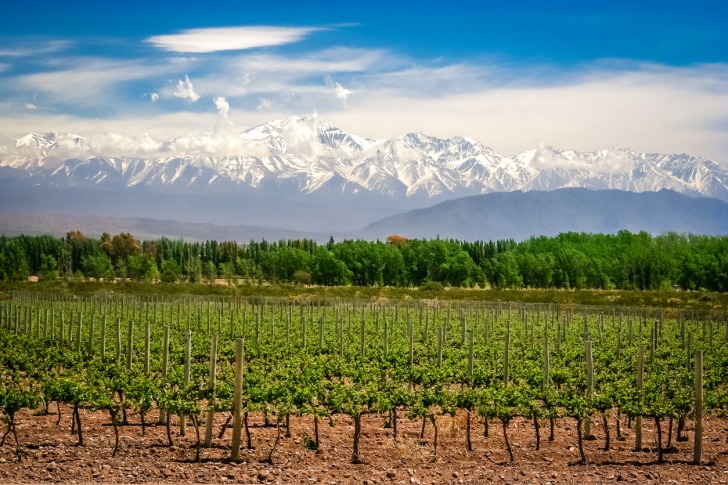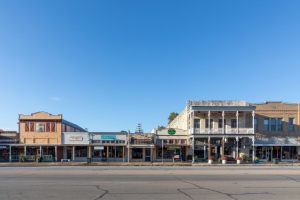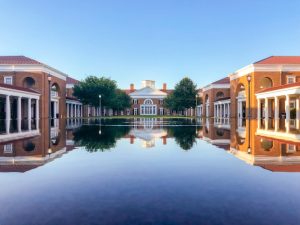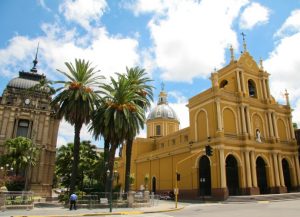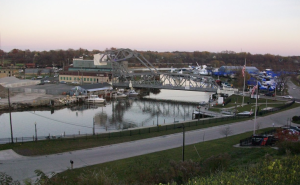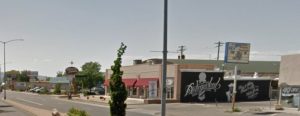 Argentina : Safety by City
Argentina : Safety by City
- Buenos Aires
- Cordoba
- La Plata
- Mendoza
- Neuquen
- Puerto Iguazu
- Puerto Madryn
- Rosario
- Salta
- San Miguel de Tucuman
- Ushuaia
Nestled in the heart of Argentina’s wine country, the city of Mendoza offers visitors numerous options and activities for discovering the region’s beauty and diversity.
With the majestic Andes mountains as a backdrop, the scenery of Mendoza is breathtaking at every turn.
Mendoza also boasts a relatively mild climate with lots of sun, making for a perfect location for outdoor explorations.
Mendoza’s climate and proximity to the mountains are also key to its prestigious wine production.
As a result, 70% of Argentinian wine is produced in this region.
Factor in adventure and ecotourism, culinary delights, and some rich cultural history, and Mendoza becomes the full package for numerous tourists.
Overall, Mendoza is considered a safe destination, but there are definitely a few tips and guidelines to consider for making your trip the best trip.
Warnings & Dangers in Mendoza

OVERALL RISK: LOW
By and large, Mendoza is considered a safe city within a relatively safe country. Tourists and travelers report feeling welcomed and free to walk around the city in the morning, noon, and (most of the) night. Most standard precautions for safe travel will apply, such as walking in groups at night, steering clear of secluded areas, and avoiding overtly displaying cash or jewelry. We’ll explore more specific situations as we move ahead.

TRANSPORT & TAXIS RISK: LOW
Traveling in Mendoza is usually considered safe with the bus system offering cheap and easy transportation. Taxi and Uber services are also available. Concierges will often be in contact with reputable services and drivers. As with any big city, always be mindful of your valuables and bags, especially during busy or peak times of the day.

PICKPOCKETS RISK: MEDIUM
Although Mendoza is a safe place to visit, the one consistent warning is about the potential of pickpockets or bag snatchers. Opportunistic criminals often target tourists, knowing their attention is focused on the beautiful sights and surroundings of the city. Keep valuables and money close, in interior pockets, or hard-to-access pockets. For example, cross-body bags can help keep valuables close and accessible, without being easily grabbed off of a shoulder.

NATURAL DISASTERS RISK: MEDIUM
Sometimes beauty comes with a price. The Andes Mountains were formed from seismic and volcanic activity. That same activity is still present for Mendoza in the Central West region. For travelers, this means there is always an underlying risk of earthquake activity or the potential of a landslide. Volcanic activity can also occur, although not as often. During heavy rains, the potential of flooding can also be a hazard to be aware of. Conversely, during summer months, extreme heat can become dangerous. Pay close attention to weather reports and drink lots of water to combat dehydration if you’re electing to be outside.

MUGGING RISK: MEDIUM
Although this kind of activity is often limited to certain places and times, there is still some risk of being robbed of money and valuables. Similarly to pickpocket behaviors, most muggings in Mendoza occur when it is more convenient for criminals. Muggings can happen when a tourist walks alone at night or ventures into notably dangerous or secluded neighborhoods or locations. For most of the city, though, there is a significant police presence. By remaining in well-lit and populated areas, most tourists in Mendoza will avoid criminal activity.

TERRORISM RISK: LOW
Mendoza and the majority of Argentina are considered at low risk for terrorist activities or threats. Political movements and ideologies aren’t considered radicalized, although discourse is often spirited among the citizenry. Much of Argentina’s political discourse is focused on increasing international exporting, commerce, and revenue. Past political models have been stymied by dysfunction and mismanagement, with current leaders looking to make definitive changes for the country, as a whole. More recently, more political marches and protests have occurred, following their presidential election cycle. Most prove to be non-violent, though, and are more likely to occur in Buenos Aries.

SCAMS RISK: LOW
Tourists are often the target of distractions or special offers, designed to bilk them of their money or valuables. Mendoza can have its share of opportunistic criminals, but it’s also fairly easy to avoid these slick tactics or situations. For instance, if a bar offers a flyer for specialty-priced drinks, politely decline. Some bars will lure unsuspecting tourists in with the promise of cheap drinks, only to be charged three or four times the actual cost. Some thieves will also attempt to engage and distract tourists on the street or in parks. A smile and a no, thank you while moving ahead is often enough discouragement.

WOMEN TRAVELERS RISK: LOW
For women travelers, Mendoza is ranked as a relatively safe place to visit. Of course, you’ll definitely want to avoid secluded, dark, or dangerous neighborhoods, but that tends to be a rule for any traveler. Women who have traveled to Mendoza and Argentina tend to have far more positive than negative reviews, but many often mention that having at least one more travel partner is beneficial for overall safety. It’s also advisable to avoid overly flashy jewelry or clothing and loose hanging bags in public.

TAP WATER RISK: LOW
Argentina’s tap water is currently considered to be some of the cleanest and best quality tap water in the world. The water and sanitation services for the major cities of the country, such as Mendoza, are well-maintained and modernized. In more remote areas, though, water quality and sanitation service standards may not be held to similar standards. Just the same, the overall water quality is still considered good. If you’re ever in question, ask your hotel or travel/transport services about the cleanliness and drinkability of the water for the region you’re visiting.
Safest Places to Visit in Mendoza
With Mendoza being a huge attraction for its wine and beautiful scenery, the city has worked hard to offer a safe and enjoyable experience for tourists and travelers.
In particular, there are several streets, like Belgrano, Villanueva, Civit, and Sarmiento, as well as adjacent streets, which cater to tourists.
The wine tours can also give visitors a first-hand experience of how the different vineyards operate.
These tours are often in a group and should be relatively safe for all travelers.
In general, the south and western parts of the city and the vineyards are the safer areas to travel.
Places to Avoid in Mendoza
Although considered mostly safe, Mendoza does have a few areas that most tourists or travelers would be wise to avoid.
As is often the case, poverty, necessity, and lack of resources will fuel desperate measures.
For the poorest neighborhoods in Mendoza, crime is an undeniable undercurrent.
When a tourist or traveler accidentally enters such a space, they may be seen as a necessary opportunity and could face serious threats to their safety and well-being.
Neighborhoods to the north of the city, such as Barrio San Martín or La Favorita, aren’t considered friendly territory for out-of-town guests.
Unfortunately, as is the case for many parts of the world, crime is on the rise in Mendoza and may be spreading out beyond just these poorer areas.
Consult with your hotel’s concierge about the best places and times to visit in and around the city and stay alert when you’re out.
Safety Tips for Traveling to Mendoza
Mendoza is a beautiful and exciting city and has lots to offer visitors.
By following some fairly simple and basic safety tips, you should have a fun and carefree trip.
- Avoid flashing cash or jewelry when you’re out and about. Thieves look for signs when they’re targeting a potential victim. By avoiding their attention, you’ll have a safer trip.
- Only take some of your money with you when you go out, and leave your passport at your hotel or villa. If a person happens to be pickpocketed or mugged, they’ll want to minimize the damage by only giving up a small part of what they’ve brought. Also, ATMs are fairly prevalent in the city and many shops or restaurants will take credit cards.
- Avoid walking alone at night or venturing into dark or secluded streets or neighborhoods. Common sense approaches to travel should apply to almost any area you visit. Staying alert of surroundings and avoiding being alone are two of the biggest tips for any traveler.
- Ask your concierge for advice about where to go and what transportation service you should take. They’ll often have a few contacts for the best and safest services and can prove quite helpful in planning excursions.
- Check the weather and plan accordingly. Summer months in Argentina can get hot and dry, but may also feature heavy rains. Plan for both and check weather reports each day before heading out.
- Sample the delicious wines, but avoid getting too tipsy. A noticeably drunk tourist may set off alarm bells for a criminal opportunist. The wine tours are a great chance to see what you like, without buying right away, and they keep you safe by traveling in a group.
- Bring first aid necessities with you in your luggage. Bandages, disinfectant, and pain relief can be a lifesaver in a pinch. Also, make sure you have more than enough necessary medication or allergy medicine, as certain brands or products may not be as readily available in a foreign city or country.
- Pack extra phone and electronics charge cords and plugs. Also, look for universal travel plugs, which can be switched to match the socket configuration of different countries. Staying connected is definitely a modern safety necessity.
- Ask about the water quality and choose bottled water if you’re not sure. Argentina is known for its clean water, so travelers should be ok in most cities. But, if you’ve ever fallen victim to the effects of bad water, you’ll most likely err on the side of caution.
- Do research and learn about the area you’re visiting before you go. If you’re reading this, you’re probably already in the process of learning more about your travel destination. By traveling knowledgeable and prepared, you’re more likely to avoid surprises and can navigate your journey with greater confidence.
So... How Safe Is Mendoza Really?
If you’re planning to travel to Mendoza, you’ll need to follow some basic safety protocols to enjoy your time.
Fortunately, this Argentinian city is an excellent destination for many types of travelers and offers relatively safe passage for visitors.
Argentina’s population is growing, but not in overwhelming numbers.
This is important as overpopulation and strains on natural resources can spell problems for a country, its people, and its tourism industry.
Fortunately, that’s not currently the case for Argentina.
Argentina’s crime statistics also paint a picture of a country that is becoming more stable and safe, with the occasional hiccup.
Small, petty crime continues to be a problem in and around the poorer areas of the county and Mendoza, itself.
Pickpockets and muggings are more prevalent than in the past but don’t necessarily signal a change for Mendoza’s visitors and tourism as yet.
Just the same, levels of crime in and around Mendoza have increased in the last three years, which has many locals and city officials looking to increase their police presence throughout the city.
For most tourists and travelers, it’s best to stay within the designated tourist centers of the city and travel in pairs or a group, whenever possible.
Remain alert of your surroundings and seek out well-populated spots with a visible police presence for maximum safety.
How Does Mendoza Compare?
| City | Safety Index |
|---|---|
| Mendoza | 68 |
| Cordoba | 61 |
| Buenos Aires | 60 |
| Puerto Iguazu | 73 |
| San Miguel de Tucuman | 32 |
| Salta | 54 |
| Neuquen | 58 |
| Manama (Bahrain) | 54 |
| Tianjin (China) | 67 |
| Brussels (Belgium) | 60 |
| Shanghai (China) | 66 |
| Belize City (Belize) | 37 |
| La Paz (Bolivia) | 52 |
Useful Information

Visas
Argentina issues travel visas for foreign nationals traveling to the country. Visitors are allowed to stay for 90 days before needing to ask for a one-time extension or leaving the country.

Currency
The peso is Argentina’s official currency. Travelers can exchange their currency for pesos at a local cambio/exchange. The exchange rate does fluctuate, so you’ll want to pay attention to the rate and possibly exchange currencies as needed. It’s also advised to have atm and credit cards available when traveling to Mendoza.

Weather
Argentina and Mendoza’s weather and climate is considered desert, with Mendoza regularly seeing over 300 days of sun a year. Temperatures in the summer can get quite hot, so prepare accordingly.

Airports
Mendoza has its own local airport, Mendoza International (MDZ). The next closest are located in San Juan and Santiago, respectively.

Travel Insurance
Insurance is not required to enter the country. However, many travelers elect to purchase insurance in the case of any medical emergencies while on vacation.
Mendoza Weather Averages (Temperatures)
Average High/Low Temperature
| Temperature / Month | Jan | Feb | Mar | Apr | May | Jun | Jul | Aug | Sep | Oct | Nov | Dec |
|---|---|---|---|---|---|---|---|---|---|---|---|---|
| High °C | 33 | 31 | 28 | 23 | 19 | 16 | 15 | 18 | 21 | 26 | 29 | 32 |
| Low °C | 18 | 17 | 15 | 10 | 6 | 2 | 1 | 3 | 7 | 11 | 14 | 17 |
| High °F | 91 | 88 | 82 | 73 | 66 | 61 | 59 | 64 | 70 | 79 | 84 | 90 |
| Low °F | 64 | 63 | 59 | 50 | 43 | 36 | 34 | 37 | 45 | 52 | 57 | 63 |
Argentina - Safety by City
| City | Safety Index |
|---|---|
| Buenos Aires | 60 |
| Cordoba | 61 |
| La Plata | 68 |
| Mendoza | 68 |
| Neuquen | 58 |
| Puerto Iguazu | 73 |
| Puerto Madryn | 70 |
| Rosario | 32 |
| Salta | 54 |
| San Miguel de Tucuman | 32 |
| Ushuaia | 68 |
